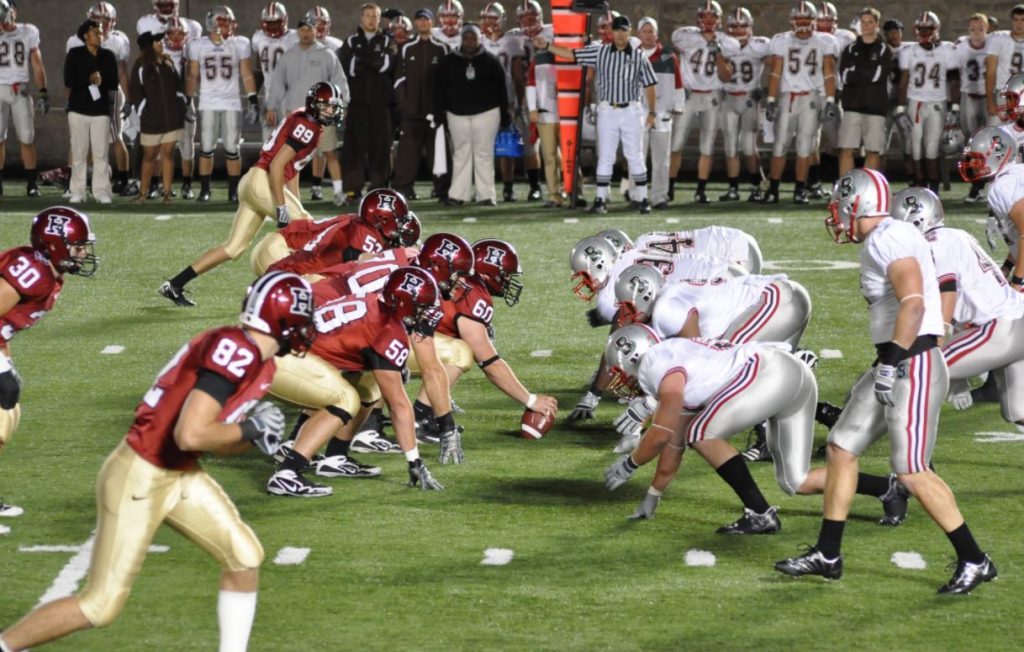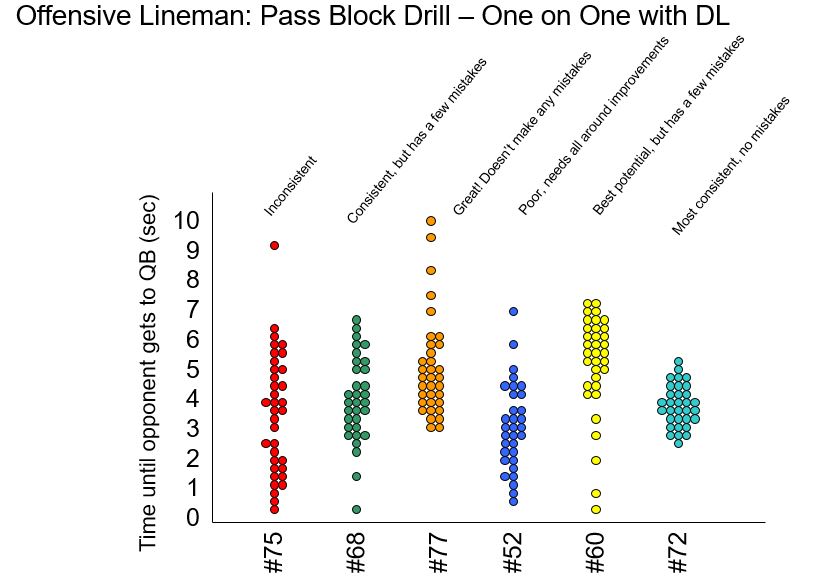
Does Lean Six Sigma Have a Place in Sports?
Lean methodologies, and Six Sigma in particular, have gained a lot of mainstream attention over the last few years, and people are now exploring more and more creative ways to apply them to various problems around us. It’s clear that the applications of Six Sigma extend beyond areas like manufacturing and production, but just how deeply can we integrate them into our society?
There are some specific areas that are investigating the potential benefits of applying Lean and Six Sigma, specifically the sports industry. Considering that Lean and Six Sigma is all about defining a process and improving it in a systematic way, why should its potential benefits be ignored?
Seeing data that makes sense
One of the most commonly mentioned benefits of applying lean methodologies to any process is the fact that certain patterns start to arise which were not obvious before. This can be particularly useful in sports, as the process of improving one’s skills in any sport mostly comes down to a realistic overview of the athlete’s past records and results, and correct identification of areas where they can use some improvement.
This approach is also beneficial in cases where it’s clear that the athlete has room for improvement in their technique, but they’re unable to identify the exact root cause of the problem. Looking at raw data without any connection between the points usually gets you nowhere, but when you are able to systematically break down your play into its fundamental pieces, the problematic aspects eventually start to surface.
From single players to large teams
A great aspect of Six Sigma is its scalability, and the ability to adapt the core philosophy to a project of any scale. This applies in the context of sports as well – you can use it to improve the game of a single player in a sport like tennis, as well as a whole team in a game like football. The only constraint is how well you’re able to define the important data points for the performance of the player(s), and the rest comes down to proper analysis of that data.
Of course, you wouldn’t be using the exact same analytical techniques in those two cases, but the basic concept stays the same, and Six Sigma can prove very useful when it comes to driving a sports participant forward in their performance.
The most famous example of statistical thinking applied to a sports team is the Oakland A’s major league baseball team, made famous by the book and movie title “Moneyball.” Using data instead of intuition, the team was able to better evaluate talent based on non-traditional measures of success (like on-base percentage, instead of RBIs or batting average), and thus compete with other teams that had much higher salaries.
Continuous improvement matters a lot
Sports is one of the areas where the concept of continuous improvement can really shine, as it’s truly important to always strive for your best here. One of the most common mistakes made by professional players is to become complacent with their current skills, not realizing when everyone manages to sweep past them because they have not been striving for improvement.
This can never happen if the philosophy of Six Sigma is applied to the training process, as one of the core concepts of is to always seek opportunities for improvement, and to realize them as often as possible. A sports player following these concepts will therefore always be able to identify when their game can be improved in a certain area, and they’re going to follow up on those improvements. Tracking and monitoring the correct data will provide the feedback to each athlete that their performance is trending in the wrong direction, or the practice they are putting in is not having the desired impact.
Let’s look at an American football team as an example, to see where process improvement could be applied to these potential metrics
Player talent evaluation:
- Tracking player’s 40-yard dash time over the season to better detect unstated injuries
- QB accuracy at hitting a target, tracked over season
- QB release time from start of throwing motion to release
- QB correct decision % (how often did they select the correct option)
- RB route decision % (how often did they select the correct route based on blocking)
- Placekicker accuracy by hash mark and distance
- WR catch % (how often did they catch it when it was within range)
- Snapper accuracy rating (how close to a target)
- Lineman blocking times (see image below)

In the image above, you can see that tracking the time until their opponent reaches the quarterback (QB) can show graphically how well they perform. Lineman #72 is very consistent (even though not the fastest or slowest), and #77 is the best, as they can hold out the longest and maintains at least 3 seconds for the QB. On the other side, #75 is very inconsistent because of the wide variation, and times near zero.
Some of these techniques are already being applied to player evaluations during high school. For example, National Camp Series KIX rating system evaluates high school placekickers, punters and snappers using Six Sigma concepts to provide objective ratings of players, so college coaches have higher success during recruiting.
Analysis can be performed to confirm the allegations of racial differences in program retention using Six Sigma methods, as explained in this article about the 2020 University of Iowa football program.
Let’s look at other ways that data can be used to make improvements for this football team, outside of the player performance:
Office Area
- Using data to compare employee performance for ticket sales, marketing, customer responsiveness
- Valid experiments and split-testing to compare marketing techniques (responses to Ad Concept #1 vs #2, Web vs. TV vs. Radio advertising, Player A vs Player B on marketing materials, Logo A vs. Logo B)
- Address customer (internal and external) complaints correctly to improve process
- Reduce errors and defects:
- Tickets delivered late, wrong name, charged wrong amount, improve timeliness of responses, video breakdown delays, rehab process errors, legal issues
- Identify and prevent “potential” or high-risk issues (reduce failure modes in the process)
- Litigation, unsafe conditions, customer dissatisfaction, player injuries and illnesses, negative press
Finances
- Advertising sales outstanding, overdue bills to suppliers, late billing, wrong billing, inconsistent quotes, late quotes, missed leads/sales, understanding reasons for low ticket sales, excess inventory for training room/equipment (use kanban instead)
Conclusion
It’s clear that there are some strong, real benefits for many sports players and teams in the adoption of lean thinking and Six Sigma methodologies. However, the results will likely vary a lot from one sport to the next, and it’s important to approach the problem with a critical, yet open mind. Lean methodologies are still seeing active developments as well, and they’re changing constantly, and it’s hard to say what we’ll discover tomorrow that can work even better for sports.
If you like the concept of improving sports teams, check out a great website Lean Blitz by Chad Walters >>>








I never thought about Six Sigma having a place in sports. This is super interesting to think about how you can use data and certain mechanisms of Six Sigma to improve some’s athletic performance. Allowing an athlete to see visually where they went wrong using numerical data (percentages of blocking / accuracy of QB) will in return show how you can continuously improve.
Thanks for the article!
Very interesting post bringing operations aspects to sports. As an athlete myself I never thought of taking the emotion out of the sport and using raw data and lean methodologies and six sigma. The offensive Lineman example was very interesting and shows the data in a clear and concise manner, and can be very beneficial to a coach to find the best person for the job or even to the player themselves to realize that they may be struggling when they didn’t realize it. Its great to compare the data that at least in my world of athletics would not typically be tracked, however using this along with Six Sigma and Lean methodologies could improve individual and team performance as a whole.
Very interesting and unique look at how 6 sigma and lean can be utilized beyond manufacturing and production. In a sport like American football, there are so many different statistics and metrics we use to evaluate the performances of each individual player. The chart displaying the performance of a teams individual offensive linemen is very interesting as a way of showing who performs the best, and who is the most consistent. Charts like these can be made for every position to measure their performance in a game. In a sport like golf, we can use lean and six sigma to measure the accuracy, control and consistency individual golfers have on different shots. Overall, six sigma methodology always seeks for opportunities to improve, and this is extremely relevant in sports where athletes should always be seeking out where they can improve their game.
I think the use of lean and six sigma in sports is the next step. Specifically for sports like football where there are multiple statistics and factors that can change the outcome of a game. Even when it comes to evaluating talent. Being able to cut out all the intangibles and the statistics, you could still measure purely based on whatever you’re testing. Like athleticism or IQ.
Very interesting article! As a college football player and potential coach of the sport myself, I find the concept of implementing lean thinking and six sigma methodologies very intriguing. Since one of the main concepts of six sigma is to always find opportunities for improvement, I believe that these methodologies would be an exceptional fit for sports, especially for football. Football is a game where there are many different working parts going at any one point, making it sometimes difficult to find where exactly the problem lies. With lean thinking and six sigma, this will help to bring these problems to light.
I liked this a lot! I hope to work as a professional coach or scout one day. I think using both data and player evaluation can help improve sports and also make it more sfer for all participants